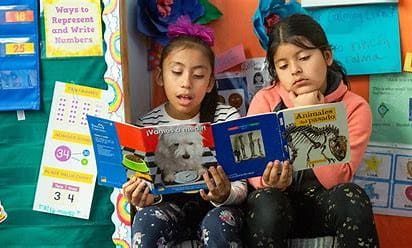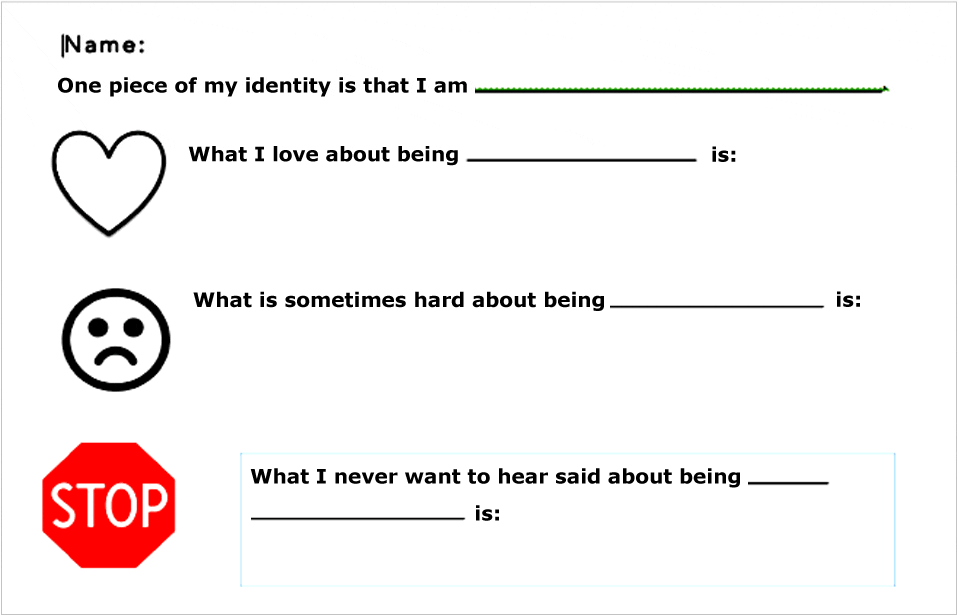
Identity Safe Classroom
Identity Safe Classrooms are, according to Dorothy M Steel and Becky Crohn Vargas, “those in which teachers strive to ensure students that their social identity is an asset, not a barrier to success.” Shane Safir, author of the article “Fostering Identity Safety in the Classroom“, notes that such classrooms students feel safe, included and valued members of the learning community. Safir has been an educator for 20 years and parent for ten. Safir writes most classrooms are identity neutral, and conversations about students in the world and the need to feel safe do not happen. So, identity is a critical feature of an equitable classroom. Safir poses a question “what gets in the way?”
Stereo Type Threat : A Barrier
Safir refers to social psychologist Claude M Steel and Joshua Arronson who coin the term Stereo Type Threat as the risk of confirming negative stereo types about one’s own identity group. Social threats of this nature can set off overwhelming emotional response that disrupts cognition. Safir finds subsequent research has uncover many consequences as a result of stereo type threat:
- Self-Handicap strategies like taking less time to practice a task
- A decrease sense of belonging in the classroom
- Students choose not to pursue an area of study, thus limiting their professional options
- The long-term perpetuation of social and education inequality
4 Ways to Increase Identity Safe Classroom
Safir offers this caveat: “Students don’t enter identity work on a level playing field. Growing up in a racialized society has an emotional impact on students of color and leads to unconscious biases that affect how we perceive ourselves and others. In the long run, our work is to create affirming classroom cultures that interrupt bias and prime students with positive associations about who they are and can be in the world.”
Safir then offers his reflections on 4 possible steps to increase identity in a safe classroom:
1. Name and affirm all types of identity.
When we introduce the language of identity, we combat the invisibility and isolation that many students feel. In my daughter’s class, I drew a tree to represent the unique and beautiful collection of selves that makes up each child. I asked students, “What is identity?” and had them populate the branches of the tree with all the elements they could suggest: an individual’s name, race, culture, language, family, interests, appearance, personality, gender, and more.
2. Model strategic vulnerability.
It’s essential to set a safe tone by modeling our own experiences — both positive and challenging — around identity. I shared a story with the class about being a child of divorced parents and having another parent label me as lacking “good values.” Ms. Dino reflected on having immigrant parents and how she often felt “different” and “outside” of the community. Students listened intently, and we could see their willingness to take a risk increase.
3. Invite students into self-authorship.
When it comes to identity, students need to tell their own story on their own terms. I developed the graphic organizer below as a scaffold to this end. After modeling our responses, Ms. Dino and I gave students time to write about one aspect of their identity before sharing in small groups. Factoring in choice, and using small groups at first, allowed students to assess their readiness to be vulnerable. Some started with low-stakes disclosure, while others dove into riskier territory. Two students shared their experiences of being teased for having same-sex parents. Another spoke of what he loved and what was sometimes tough about his racial identity, while others spoke of being pigeonholed by their gender. Ms. Dino repeated this activity several times throughout the year.

4. Create identity safe class agreements.
At the end of the workshop, we asked, “What agreements can we make to create a safer classroom community?” Students brainstormed their ideas on post-it notes, and we invited them to share. One girl said, “We should fill each others’ buckets with compliments.” Not only did “bucket-filling” become a class agreement, but it also initiated a new ritual called Seashells. Once a week, Ms. Dino led a community circle in which students could give each other seashells, along with public appreciation.
I recently asked my daughter, “How do you think the identity workshop last year impacted Ms. Dino’s class?” Her response: “People stopped teasing me after the workshop. They stopped bullying.” As a mom, that’s all I needed to hear. As an educator, I can see that another world is possible.
How do you promote identity safety in your classroom or school?
This post will be under Building Unbiase Learning Environment page
